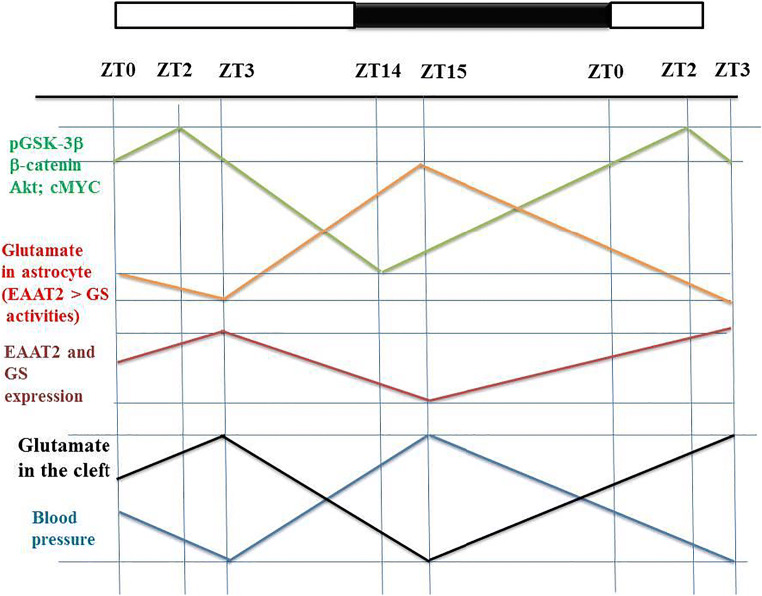Fig. 4.
Simplified model of the CR of the BP. pGSK-3β, Akt activation, and nuclear β-catenin vary in a parallel manner and decrease from ZT2 to ZT14. Glutamate astrocyte content is the difference between EAAT2 activity and GS activation. Glutamate content in astrocyte cytoplasm inhibits the Akt pathway and consequently the GSK-3β phosphorylation which progressively decreases from ZT2 to ZT14. EAAT2 and GS vary in parallel with pGSK-3β, but with a short delay. Glutamate content in the synaptic cleft activates the SCN glutamatergic neurons projecting to the PVN and subsequently to the NTS. This increases the parasympathetic tone and inhibits the sympathetic tone, leading to decrease BP during the night. The glutamate content in the cleft progressively decreases from ZT3 to to ZT15, which decreases the parasympathetic tone and increases the sympathetic tone, resulting in an increase in BP during the daytime

